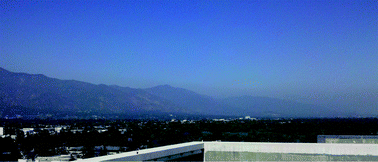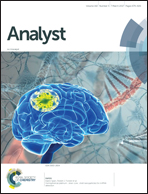Quantification of the sources and composition of particulate matter by field-deployable mass spectrometry: implications for air quality and public health
Abstract
Airborne particulate matter less than 2.5 μm in diameter (PM2.5) negatively impacts air quality in cities throughout the world where it has been linked to increased cardiac and respiratory morbidity and mortality. For this reason PM2.5 standards have been established by many countries and the World Health Organization. However, these guidelines are regularly exceeded in North America, Europe and East Asia. While PM2.5 is often reported as a single atmospheric species, it is actually a mixture of organic and inorganic compounds. The organic fraction, termed organic aerosol (OA), contributes approximately 20–70% of the PM2.5 mass globally, and OA itself is a complex mixture of thousands of compounds. Characterizing the chemical properties of OA represents a major analytical challenge that has motivated the development of a range of new instruments. The focus of this perspective is the use of field-deployable mass spectrometers and in particular the Aerodyne Aerosol Mass Spectrometer (AMS) for chemically characterizing submicron particles. Field measurements of the composition of PM2.5 are directly relevant to evaluating its health impact because reductions in life expectancy due to PM2.5 vary according to composition. In addition, AMS measurements are especially useful for characterizing OA. The sources of OA are not well understood as evidenced by the performance of many air quality models, including those run by government agencies, which lack accurate and well constrained parameterizations for simulating secondary OA concentrations in urban regions. Given that OA is an important component of the total PM2.5 mass, this uncertainty makes accurate evaluation of the impact of PM2.5 on public health difficult, especially when evaluating future mitigation strategies. The development of the AMS has been a critical step towards addressing this public health challenge in that it provides quantitative data regarding particulate matter and OA concentration and composition that can be used to constrain uncertainties in air quality models.

- This article is part of the themed collection: Analyst Emerging Investigator Lectureship winners


 Please wait while we load your content...
Please wait while we load your content...